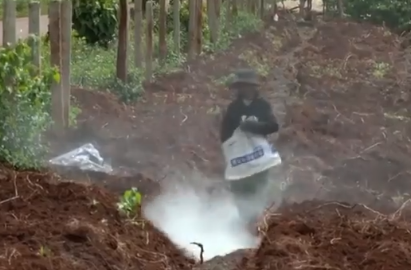We all love coffee, but recently growers have been hit with challenges which are now causing the prices to rise
Carmen Alvarez, a seasoned coffee grower, surveys her five-year-old coffee plants with concern, noting the brown spots on the leaves—a sign of distress. Together with her husband Francisco Mamani, she has cultivated coffee near Bolivia’s Amboro National Park for three decades, encountering numerous environmental challenges along the way.
Coffee plants are particularly sensitive, requiring precise conditions to prosper. Each year presents new hurdles with pests and diseases, a common struggle for growers across the global “coffee belt.”
Coffee Berry Borer and Coffee Leaf Rust pose serious threats to coffee plantations!
To control these:
1. Use mulching to reduce splash erosion for Coffee Leaf Rust.
2. Apply pesticides for Coffee Berry Borer. #EgeraUmuhinzi #EGERASchool #AgInRwanda #Agronomme🇷🇼 pic.twitter.com/MF2Kr3b2RC— AGRONOMME 🇷🇼 (@Agronomme_) June 27, 2024
The coffee industry, a major global commodity, was estimated to be worth $138 billion last year. It supports approximately 125 million jobs in over 70 countries. In the U.S. alone, the industry is responsible for 2.2 million jobs and generates substantial wage revenue.
Recently, the Alvarezes have noticed increasing unpredictability in weather patterns, complicating the management of diseases and pest infestations. This unpredictability is part of a broader issue impacting coffee producers worldwide as shifting climates lead to more prevalent diseases and erratic weather conditions.
One significant threat to the industry is coffee leaf rust, especially detrimental to Arabica coffee varieties. This fungal disease has now appeared in Saudi Arabia, one of the few coffee-producing areas previously unaffected by the disease. The discovery marks a concerning expansion of the disease, which threatens a significant portion of global coffee production.
Coffee leaf rust is the most debilitating and widespread disease affecting coffee growers. It causes an estimated $1 billion in damage to coffee crops each year.
Despite the significance and urgency, solutions are not well-known, and the ones that are well-known are not… pic.twitter.com/ZLpyW5Gg99
— Sam Knowlton (@samdknowlton) January 11, 2024
The U.S. imports a substantial amount of coffee from Saudi Arabia, highlighting the potential impact of such diseases on global supply chains. Moreover, studies suggest that up to 60% of coffee species could face extinction due to climate change and its effects, with high-quality Arabica strains at particular risk. Not many know that Saudi Arabia has a growing agricultural sector.
The coffee industry faces a potentially drastic reduction in suitable growing regions over the next 25 years. Amanda Archila, executive director of Fairtrade America, underscores the severity of the situation, noting that countries like Brazil, Vietnam, Indonesia, and Colombia are especially vulnerable. The changing climate may force farmers to either adapt their methods or abandon coffee farming altogether.
In Colombia, erratic rainfall has led to severe water shortages, affecting crop irrigation and leading to smaller, weaker plants more susceptible to pests and diseases. These challenges highlight the necessity of innovative agricultural practices and crop diversification to sustain the livelihoods of coffee farmers.
Despite these challenges, Mrs. Alvarez remains determined. Her family has adapted various traditional and new methods to combat the threats to their crops. They use a mix of natural remedies, such as wood ashes, and chemical treatments to protect their plants from diseases and pests.
The coffee grown by the Alvarez family is primarily Castillo, an Arabica-Robusta hybrid known for its resilience to coffee leaf rust and other diseases. While some purists may not favor hybrids for their flavor profile, Mrs. Alvarez believes that proper roasting can enhance the coffee’s quality.
Major Points
- Carmen Alvarez and Francisco Mamani, coffee growers in Bolivia, face increasing challenges due to unpredictable weather and diseases like coffee leaf rust.
- The global coffee industry, worth $138 billion, supports 125 million jobs but is threatened by shifting climate conditions.
- Recent occurrences of coffee leaf rust in previously unaffected regions like Saudi Arabia signal a growing threat to coffee production worldwide.
- Studies predict significant reductions in suitable coffee-growing areas and potential mass extinctions of coffee species due to climate change.
- Despite these challenges, growers like the Alvarez family are employing innovative methods and crop diversification to sustain their livelihoods and adapt to changing conditions.
Al Santana – Reprinted with permission of Whatfinger News



